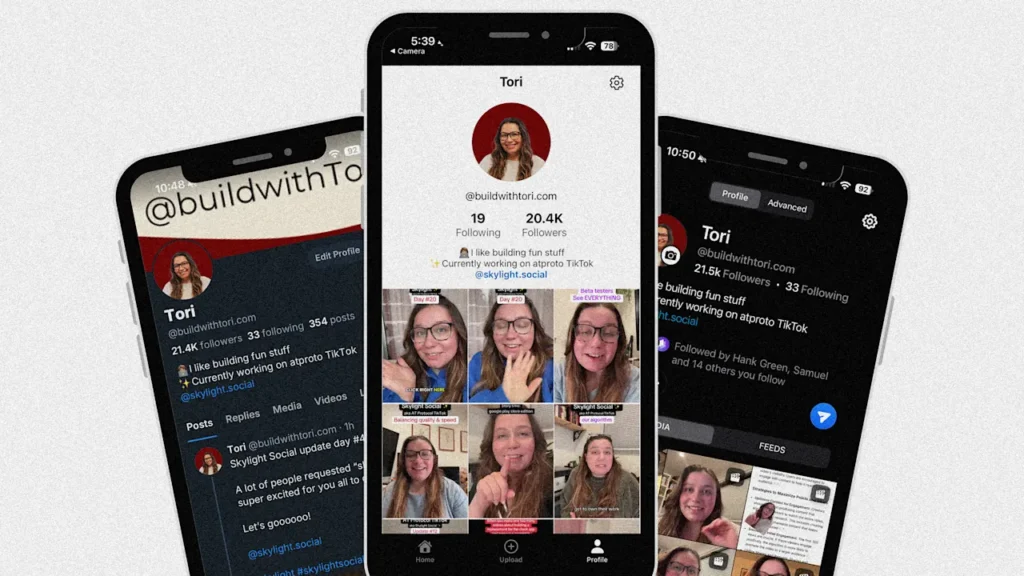
The current king of social media is the short-form video platform TikTok. It’s where trends are forged, news is broken, and opinions spread. Owned by China’s ByteDance, the app has an estimated 1.99 billion users—33% fewer than Facebook’s three billion—and yet Meta is desperately trying to mimic TikTok’s features in its apps (particularly Instagram).
But despite its popularity, TikTok has been under siege in 2025. It is facing the threat of a U.S. ban, which would jeopardize the livelihoods of millions of Americans who rely on the app to earn a living. And even if it survives, by transferring its assets to U.S.-owned interests, TikTok’s U.S. algorithm could change under new owners, which could make their content less discoverable.
A growing number of concerned TikTok users are starting to take precautions, gravitating toward a small but expanding short-form video platform called Skylight. Here’s why.
What is Skylight?
Skylight Social, better known as Skylight, is a baby in the social media world. It didn’t exist until earlier this year, after TikTok was briefly taken offline in the United States ahead of the government ban.
The platform, which is currently accessible through dedicated Skylight iOS and Android apps, went live in April. It is the brainchild of a two-person team, CEO Tori White and CTO Reed Harmeyer. But it also has a big-name backer behind it: Mark Cuban.
While on the surface, Skylight looks a lot like TikTok, with a scrollable feed of full-screen short-form videos you can like and comment on, it also has a significant difference. Skylight is built on the Authenticated Transfer Protocol, or AT Protocol for short. This is the same protocol that X competitor Bluesky is built upon. That upstart social media network now has more than 39 million users.
The advantage of the AT Protocol versus TikTok’s protocol (and the protocols of other social media companies like Meta) is that the AT Protocol is decentralized. This means that the platforms that use the AT Protocol don’t hold power over the content you create; it is not tied to one company’s servers. If the AT Protocol platform you’re using shuts down or just no longer works for your needs, you can take all of your content and followers to another platform.
As TechCrunch reported in April, in the face of a TikTok ban early this year, Cuban put out the call for someone to develop a TikTok competitor based on the AT Protocol. Harmeyer and White, the latter of whom had a following on TikTok and was worried about losing her community if the app were banned, decided to answer it.
The two big benefits Skylight has over TikTok
Skylight has two primary advantages over TikTok. Since it’s based on the AT Protocol, Skylight is a decentralized social media platform. That means your content and followers aren’t locked into the platform. You’re free to move all your videos and community to another AT Protocol short-form video app any time you want.
This decentralization also makes Skylight fairly “ban-proof.” Any government can pretty easily block any social media network it desires because all major social media platforms are closed, centralized networks. But since decentralized platforms aren’t tied to any one app, even if an app itself is banned, a creator can simply take all their content, including likes, followers, and comments, to another platform and continue posting as usual.
Indeed, the main marketing pitch Skylight uses on its website is touting the platform as “unbannable,” which, due to the flexibility of the decentralized AT Protocol, is a reasonable claim to make.
But Skylight has another benefit. In August, the platform was updated with human-curated feeds. This differs from the algorithmically curated feeds used by major social media networks. Algorithmic curation is notoriously opaque, and, as DigiDay has noted, when it comes to TikTok, many existing users fear that its proposed new U.S. owners may change the existing algorithm to be friendlier to videos that align with their goals or ideology.
Last month, CNN reported that TikTok’s new U.S. owners will include a consortium that will be comprised of Oracle, Andreessen Horowitz, and Silver Lake, and that this consortium will “be operated by a majority-U.S. board, including a member appointed by the Trump administration.”
With Skylight’s focus on human-curated feeds that users can choose to follow, the platform aims to help users feel assured that no algorithmic favoritism or censorship is occurring behind its digital walls.
What is it like using Skylight?
In an age where just a few trillion-dollar social media giants have control over not just our content, but the algorithms controlling who sees it, and where governments seem more willing than ever to ban platforms that millions of users rely on as their digital town squares, a short-form video platform like Skylight is sorely needed.
But what’s it like actually using the app? On a basic level, it feels as familiar as using TikTok: you scroll, like, and comment. It works well.
The one significant drawback, however, is its limited content. Currently, Skylight has nowhere near the wealth of videos that TikTok offers—which is no surprise, given the platform’s youth. In August, TechCrunch reported that the app had garnered around 240,000 downloads and had approximately 100,000 videos uploaded to its platform. But that could change.
At one point, the AT Protocol-based Bluesky also had similar numbers, and now that decentralized platform is approaching 40 million users.
Will Skylight ever reach that level? One should hope so. As tech giants and billionaires continue to consolidate their grip on the world’s social media networks, and even liberal democratic governments threaten to ban those same networks, the world needs platforms that their creators and users command. The future of free, unfettered speech that can’t be controlled by corporations may depend on it.
